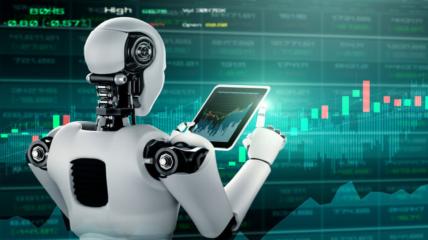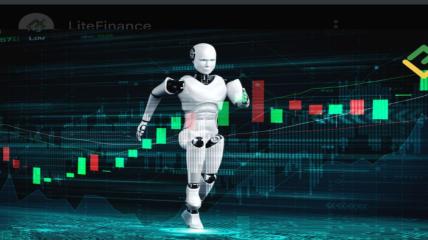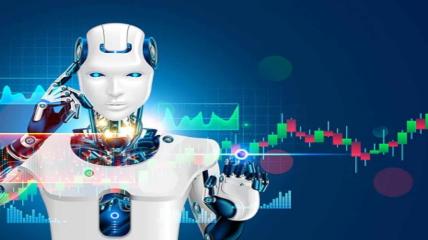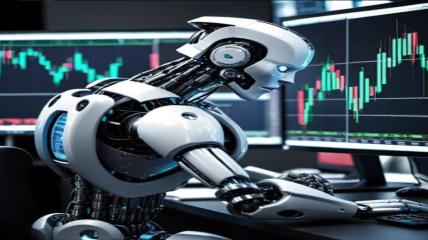EA Trading — How Much AI Is Your Expert Advisor Really Using?
EA Trading — How Much AI Is Your Expert Advisor
Really
Using?
In the world of Forex and automated trading, the term “AI” has gone from niche to everywhere. Expert Advisors (EAs) are now marketed with “AI-powered”, “machine learning model”, “neural network inside”, etc. But how often is that more than just marketing? And when there is real AI, how much does it meaningfully contribute?
If you’re going to trust capital (even small amounts) to an EA under the guise of “AI,” you need to understand what that really means, what to watch out for, and how to pick one that actually uses AI in a useful way. Below is a breakdown.
What People Mean by “AI” in the EA World
“AI” in trading / EAs can mean many different things, from trivial add-ons to deeply integrated algorithms. Here are levels of “AI usage” you’ll see
Why It Matters
- Overfitting Risk: An EA that “learned” from past data but never sees new market regimes will fail in live trading.
- Transparency: If you don’t know how the EA makes its decisions (what data, what model, how often updated), it’s hard to trust claims.
- Robustness: Real AI-powered EAs need good data, vigilance, and risk management. Without them, simple rule-based systems are often safer.
- Cost vs Benefit: AI integration often increases development time, cost, and sometimes operational requirements. If the benefit is marginal, it might not be worth the premium.
Real Examples & Case Studies
Here are a few concrete examples of how some EAs are using AI (or claiming to), and how to tell whether the claims hold up.
- Perceptrader AI by ValeryTrading
This EA claims to use machine learning, neural networks, and big data to detect patterns, filter trades, etc. It illustrates a more serious AI approach: model training on historical data, use of technical indicators + volume + trend predictors. - EasyAlgos AI
Their write-ups describe neural networks being core to trade filtering (scoring potential trades), rather than just an occasional tweak. They emphasize training outside platforms like MetaTrader, then importing trained models for inference. - “Artificial Intelligence Expert Advisor” on EarnForex
This is more of an approximation: it uses “simplistic imitation of a neural network” but doesn’t truly learn from market over time; rather, it needs optimization/manual parameter adjustments. That is, it’s mostly static / rule based with “AI style” features. - EA Builders & Generator Tools
Tools that help you build your own EA, sometimes via AI, or neural network training modules. For example, an EA Generator may allow you to define pattern bars, neural network layers, etc., and train a model from data. These can yield more genuine AI usage—but depend heavily on the user.
How Much “AI” Do Most EAs
Actually
Use?
Putting together what’s available publicly and how many EAs present themselves, here’s a rough sense of how much AI versus hype most retail EAs are using (based on recent reviews and developer disclosures):
- A majority are still mostly rule-based, with AI on the periphery (filters, indicators, basic scoring).
- A smaller fraction have core AI components (neural network filters, ML models) but many of those don’t fully disclose their architecture or retraining cadence.
- A very small number do what you’d consider full integration—the EA’s logic, risk management, signal generation are all tightly tied into ML/AI, with ongoing research, feature engineering, and live adaptation.
What Questions to Ask Before Buying / Running an “AI EA”
If you’re considering using or buying an EA that claims to be “AI-powered,” here are good questions to ask:
- What model(s) exactly are you using? (Neural net, decision tree, reinforcement learning, etc.)
- What inputs/features does the model consume? (Indicators, volume, trend, sentiment, macro data, etc.) Are they etc., engineered features or simple raw data?
- How often is the model retrained/updated? Markets change—what was good in 2021 may not work in 2025.
- Is there live verified performance, not just backtests? Third-party audited or Myfxbook / FXBlue / independent proof helps.
- How does AI affect risk management? Is it used just to pick which trades to take, or also position sizing, exit strategy, drawdowns, recovery?
- What are worst case scenarios? How does the EA behave in high volatility, during news events, or in changing market regimes?
- What transparency/documentation is available? Can you see if the logic is somewhat clear; ask for whitepapers / research / technical breakdowns.
- What resources are needed? (Do you need powerful hardware, constant internet / VPS, updates, etc.)
Bottom Line: Is AI a Game-changer — or Just a Buzzword?
- Yes, real AI integrated well can provide advantages: better trade filtering, adaptation, and potentially higher robustness over time.
- But: it’s not magic. It adds complexity, demands better data, ongoing care, and higher risk if misused.
- Many EAs advertised as “AI” are closer to advanced rule‐sets than true learning systems. That doesn’t necessarily mean they’re useless, but expectations should be tempered.
- Always test (demo/live), use risk controls, and treat AI EAs like tools — not guarantees.







